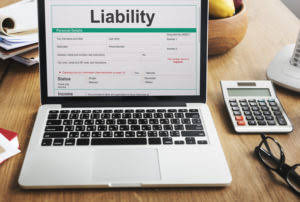Accounting Cycle Simplified: A Step-by-Step Guide for Businesses
Data da publicação: 22 de outubro de 2021 Categoria: Bookkeeping
A reversing journal entry is recorded on the first day of the new period to avoid double counting the amount when the transaction occurs in the next period. Adjusting entries are required to be is because a transaction may have influence revenues or expenses beyond the current accounting period and to journalize to the events that not yet recorded. To determine the equality of debits and credits as recorded in the general ledger, an unadjusted is prepared. It is a way to investigate and find the fault or prove the correctness of the previous steps before proceeding to the next step. Accounting cycle is a process of a complete sequence of accounting procedures in appropriate order during each accounting period. The accounting process is a combination of activities that begin when a transaction occurs and end with its inclusion in the financial statements at the end of the accounting period.
Initiating Transactions
- He has been the CFO or controller of both small and medium sized companies and has run small businesses of his own.
- Accounting cycle is a process of a complete sequence of accounting procedures in appropriate order during each accounting period.
- After successfully completion of nine steps in accounting cycle, the new accounting period (fiscal year) starts and new accounting cycle starts from step 1.
- The accounting cycle diagram is available for download in PDF format by following the link below.
- A trial balance is a bookkeeping worksheet that compiles the balances of ledgers into debit and credit account columns.
With business.com+, members get dedicated support, exclusive deals and expert advice. Shaun Conrad is a Certified Public Accountant and CPA exam expert with a passion for teaching. After almost a decade of experience in public accounting, he created MyAccountingCourse.com to help people learn accounting & finance, pass the CPA exam, and start their career.

HighRadius Named a Challenger In 2025 Gartner® Magic Quadrant™ for Financial Close and Consolidation Solutions
- The accounting cycle is a series of sequential steps that businesses follow to accurately record, classify, summarize, and report their financial transactions.
- Many companies have these steps automated through accounting software and the use of technology.
- It’s helpful to also note some other details to make it easier to categorize transactions.
- The accounting cycle is a thorough, time-consuming process, but it gives companies the power to understand their financial activities with as much accuracy as possible.
- As accountants identify the mistakes, they rectify the same in the worksheet to ensure debits are equal to credits.
The accounting cycle is a systematic process that guides businesses in recording, analyzing, and reporting their financial transactions. By following the key steps outlined in this article, companies can ensure the accuracy and integrity of their financial information, enabling stakeholders to make informed decisions. Understanding the accounting cycle is essential for professionals in the field of accounting and finance, as it forms the foundation of financial reporting and analysis.
Preparation of Financial Statement
The first step of the accounting cycle is to analyze each transaction as it occurs in the business. This step involves determining the titles and nature of accounts that the transaction will affect. Each business transaction must be properly analyzed so that it can be correctly recorded in the journal.

It is important to note that the unadjusted trial balance does not necessarily mean the accounts are error-free, as it can still contain errors related to omission, accruals, deferrals, or depreciation. By following the steps involved in the cycle, businesses can ensure the reliability of their financial statements and make well-informed decisions for their future growth. The trial balance gives you an idea of each account’s unadjusted balance. Such balances are then carried forward to the accounting cycles next step for testing and analysis.
Preparation of Trial Balance
If you don’t understand the accounting cycle itself, you’re more likely to miscode transactions or miss necessary adjustments. If you followed the earlier steps in the cycle correctly, the reports should be accurate and ready to share with clients, stakeholders, or auditors. A well-maintained ledger helps you spot issues faster and makes trial balances and reconciliations much easier to manage. This realtime ability to make adjustments and see them updated means that today, the accounting cycle is happening all at once by automating every step. Revenues and expenses accounts are increase and decrease in a different direction. Revenues increase on the credit side while expenses are increasing on the debit side like assets.
Map Current Process
The accounting cycle is a systematic process followed by businesses to record, analyze, and ultimately report financial transactions. It’s an essential aspect of ensuring the accuracy and completeness of a company’s financial statements. The eighth step in the accounting cycle is journalizing and posting closing entries. The periodic expenses and income, along with the remaining balance of the income statement, are generally closed by passing closing entries after the financial statement has been prepared. Choose your customized financial reports to generate financial statements for the accounting period, whether monthly or year-end. Your financial statements can be set up to show quarterly totals Oil And Gas Accounting in many accounting systems.
Reversing entries:

The accounting cycle is a standard, 8-step accounting process that tracks, records, and analyzes all financial activity and transactions within a business. It starts when a transaction is made, and ends when a financial statement is issued and the books are closed. An accounting process records a company’s financial transactions for an accounting period to provide accurate details to the internal and external stakeholders. On the other hand, the budget cycle includes recording and analyzing the budget-based transaction a company decides to make for a future project.
For example, a cash sale involves a debit to cash and a credit to sales revenue. In the last step of the accounting cycle, the accountant requires to perform the post-closing trial balance. This statement is prepared after an accountant makes all necessary adjustments to the general ledger and the adjusted trial balance, and all the suspended accounts are closed. Once all the adjusting entries are made to trial balance and account ledgers, the fifth step of the accounting cycle is preparing the adjusted trial balance. These statements should be done before drafting the financial statements. The accounting cycle plays a crucial role in financial reporting by providing a structured and systematic process for recording, organizing, and presenting a company’s financial information.
Automation streamlines tasks such as journal entries, ledger postings, and financial statement preparation. This reduces human error, improves efficiency, and allows accountants to focus more on analysis and decision-making. There are many closing activities, as detailed in our Closing QuickBooks the Books course. The accounting cycle is a standard, 8-step process that tracks, records, and analyzes all financial activity and transactions within a business.

